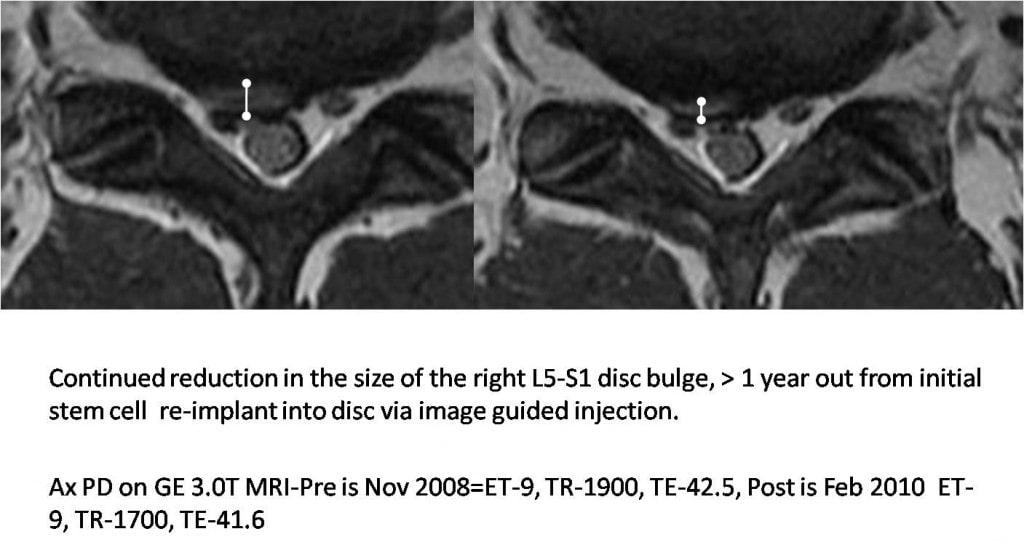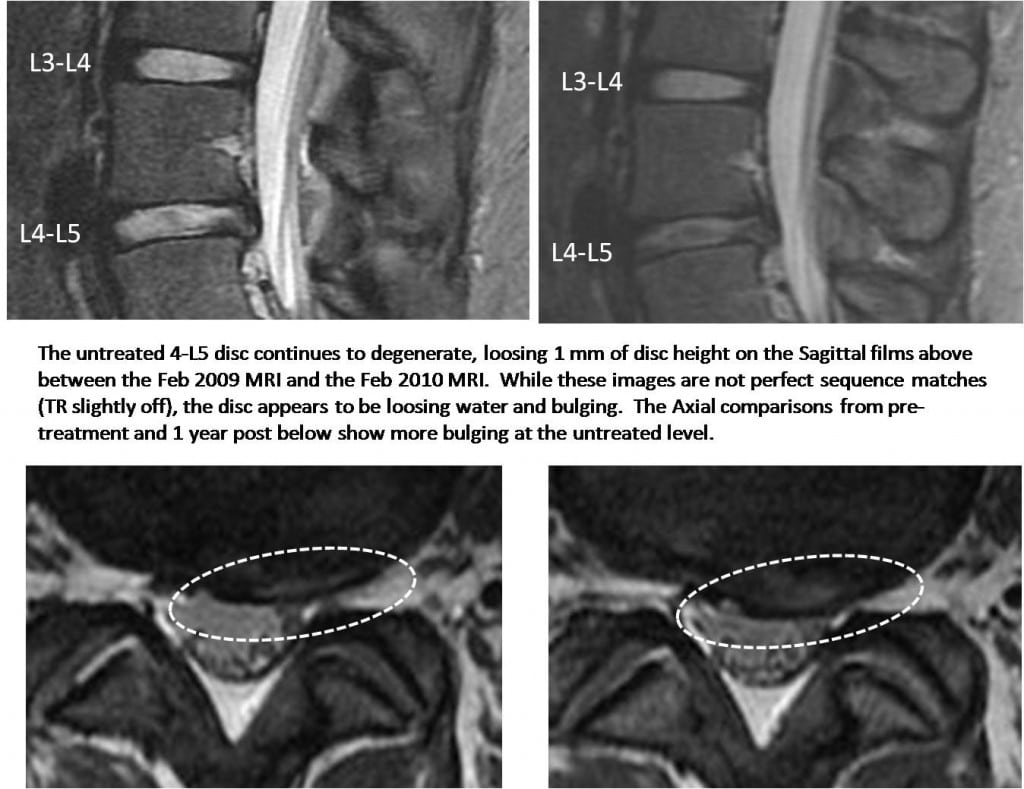One Year Post Op on a Low Back Disc Bulge Treated with Stem Cell Injection
One of the problems with damaged discs is that they tend to go one direction, they degenerate with time. This is one of the big issues for most patients who have low back surgery (laser spine surgery included, micro surgeries, minimally invasive low back surgery, to the disc it’s all the same). Since the surgeon removes parts and pieces of the disc (again doesn’t matter if it’s vaporized with a laser or pulled out with a surgical instrument), the disc continues to collapse in height and lose water (likely at a faster pace due to the surgery). We get a short term gain (less pressure on a nerve) and create a bigger long-term problem (the disc now degenerates faster) As it does this and the years pass, more arthritis forms and this can press on more nerves. In the end, the cells inside the disc die off with time. Not so long ago, I blogged on an animal paper which showed that mesenchymal stem cells, when re-implanted into a degenerated disc, stopped the progression of degeneration in it’s tracks. Yesterday, we got one year follow-up films back on an a study patient who had her large L5-S1 disc bulge treated by injecting stem cells into the bulge, rather than surgery. The films below show that the disc bulge is still smaller than it was before the stem cell injection and perhaps getting a bit smaller:
If you look at the before image to the left (above), the disc bulge is bigger before stem cell injection, the one year follow-up after stem cell injection on the right shows a smaller bulge. While that’s great news, the more interesting issue is what happened to the non-treated L4-L5 disc. This disc serves as a control, meaning what happens to it is what the treated disc should be doing if it continued to degenerate. What’s happening to the non-treated disc above the treated disc?
The untreated disc (L4-L5) has indeed continued to degenerate as expected. In the MRI’s above, it’s lost 1 mm in height and has a bigger bulge as well as seems to be holding onto less water (darker on MRI). What happened to the treated disc during this time? No loss in height, no loss in water content, disc bulge size is still smaller than pre-treatment. This is interesting, as it may mean that the normal degenerative process (discs get darker, lose height, and bulge more over time) has been slowed or possibly stopped for now.
(Please note, this patient was treated with the Regenexx-C cultured stem cell procedure and not Regenexx-SD. While Regenexx-SD does rely on the same stem cell type that was used to treat these patients and other clinics have reported good results using similar procedures that don’t rely on stem cell culturing, Regenexx-SD clinical effectiveness has not yet been established. In addition, not all patients get these same results.)

If you have questions or comments about this blog post, please email us at [email protected]
NOTE: This blog post provides general information to help the reader better understand regenerative medicine, musculoskeletal health, and related subjects. All content provided in this blog, website, or any linked materials, including text, graphics, images, patient profiles, outcomes, and information, are not intended and should not be considered or used as a substitute for medical advice, diagnosis, or treatment. Please always consult with a professional and certified healthcare provider to discuss if a treatment is right for you.


